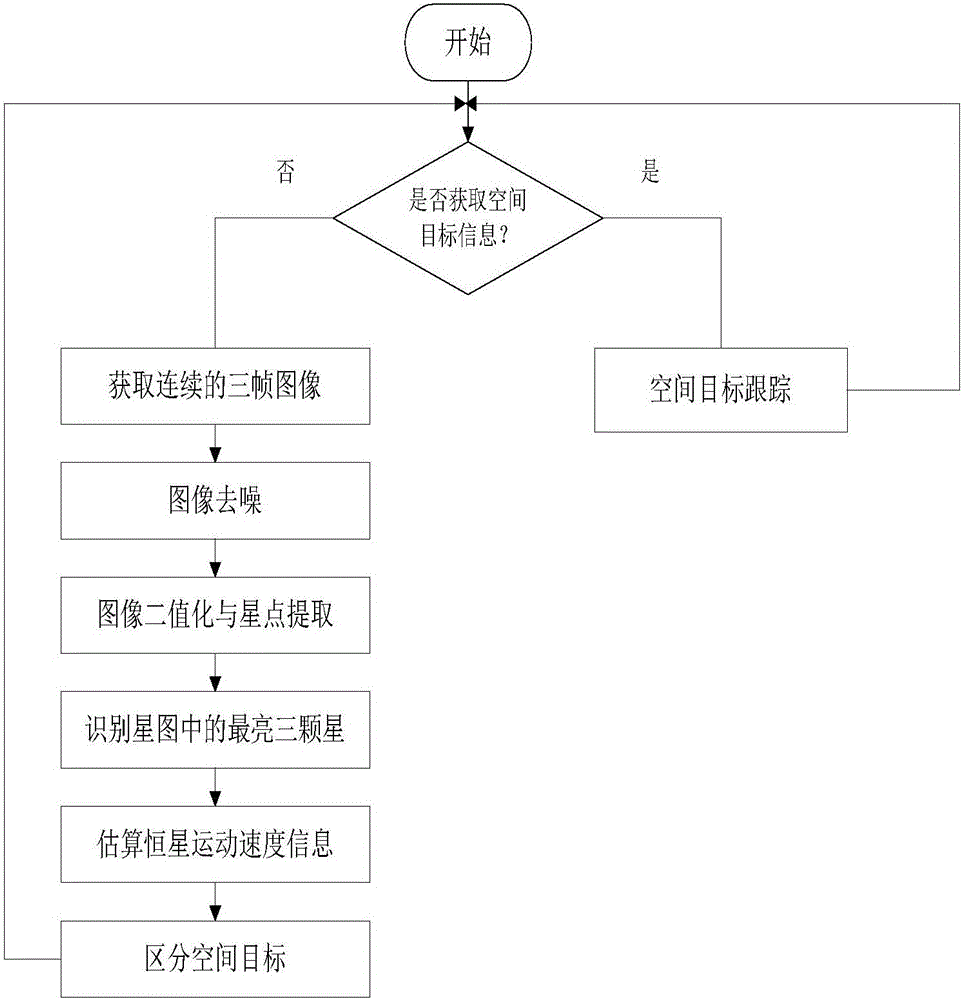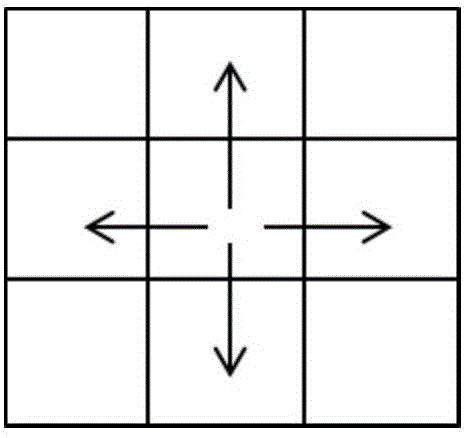Method for detecting and tracking space target in space-based optical sequential image
A space target, detection and tracking technology, applied in the field of space target recognition, can solve the problems of inapplicability, distinguish space targets from star points, and do not involve the problem of space target tracking in sequence frame images, achieve a wide range of applications, overcome visual problems, etc. Effects of Shaft Jitter Error
- Summary
- Abstract
- Description
- Claims
- Application Information
AI Technical Summary
Problems solved by technology
Method used
Image
Examples
Embodiment Construction
[0056] In order to make the object, technical solution and advantages of the present invention clearer, the present invention will be further described in detail below in conjunction with the accompanying drawings and embodiments. It should be understood that the specific embodiments described here are only used to explain the present invention, not to limit the present invention. In addition, the technical features involved in the various embodiments of the present invention described below can be combined with each other as long as they do not constitute a conflict with each other.
[0057] The flow of the space target detection and tracking method in the space-based optical sequence image provided by the embodiment of the present invention is as follows figure 1 shown, including the following steps:
[0058] (1) Obtain continuous N frames of star maps; respectively carry out image denoising processing and star point extraction to N frame images, and extract the star point ...
PUM
 Login to View More
Login to View More Abstract
Description
Claims
Application Information
 Login to View More
Login to View More - R&D
- Intellectual Property
- Life Sciences
- Materials
- Tech Scout
- Unparalleled Data Quality
- Higher Quality Content
- 60% Fewer Hallucinations
Browse by: Latest US Patents, China's latest patents, Technical Efficacy Thesaurus, Application Domain, Technology Topic, Popular Technical Reports.
© 2025 PatSnap. All rights reserved.Legal|Privacy policy|Modern Slavery Act Transparency Statement|Sitemap|About US| Contact US: help@patsnap.com



